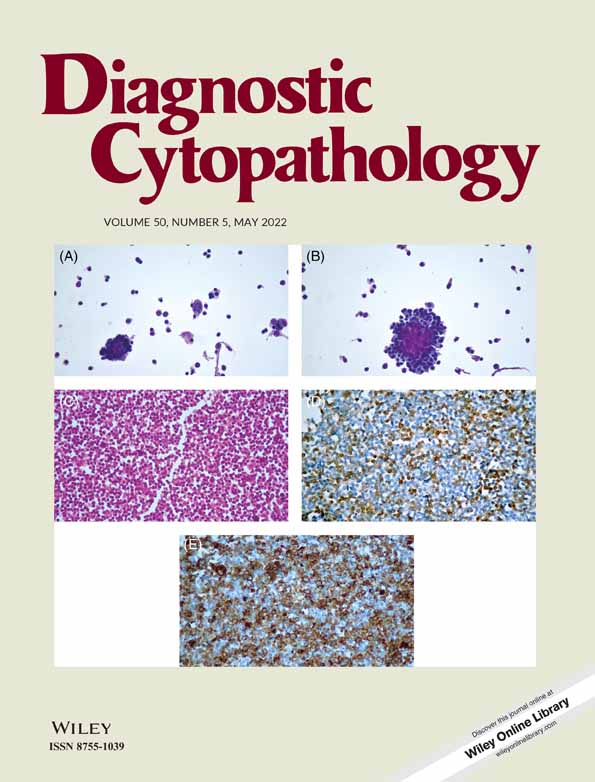Exploration of INSM1 and hASH1 as additional markers in lung cytology samples of high-grade neuroendocrine carcinoma with indeterminate neuroendocrine differentiation
Abstract
Background
Traditional neuroendocrine (NE) markers synaptophysin, chromogranin, and CD56 play an integral role in affirming the diagnosis of high-grade lung NE carcinoma, however promising markers, INSM1, and hASH1, have been identified. We investigated the utility of these markers in pulmonary cytology specimens, particularly in cases where results of traditional NE markers were equivocal.
Methods
A retrospective search of cytology cases obtained via endobronchial ultrasound (EBUS)-guided FNA revealed 26 cases of high-grade lung carcinoma where an indeterminate diagnosis of small-cell lung carcinoma (SCLC) was based on equivocal IHC staining with traditional NE markers. A separate cohort of 23 cases positive for all traditional markers with a definitive diagnosis of SCLC was also selected. Cytology cellblock sections were immunostained with INSM1 and hASH1 and analyzed using H-score methodology (score range 0–300). A score of ≥95 was considered “positive.”
Results
INSM1 was positive in 19/24 (79.2%) of cases of high-grade lung carcinoma with indeterminate NE differentiation, while hASH1 was positive in 6/24 (25.0%). Chromogranin was seen only focally positive (<10% of cells) in 4/24 (16.7%), synaptophysin positive in 16/24 (66.7%), and CD56 positive in 14/21 (66.7%). Among unambiguous cases, INSM1 was positive in all cases with an average score of 233.9, while hASH1 was positive in 21/23 (91.3%) with an average score of 196.3.
Conclusion
Compared with traditional NE stains and to hASH1, INSM1 was expressed in a higher number of cases of high-grade lung NE carcinomas in cytology cellblock specimens, making it a superior, more sensitive NE marker.
CONFLICT OF INTEREST
The authors declare no conflicts of interest.
Open Research
DATA AVAILABILITY STATEMENT
Data available on request from the authors.




